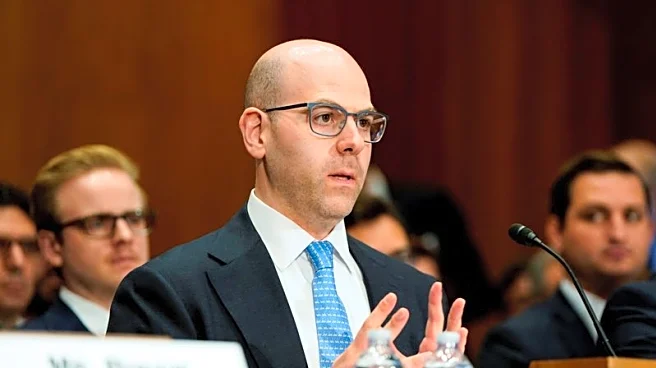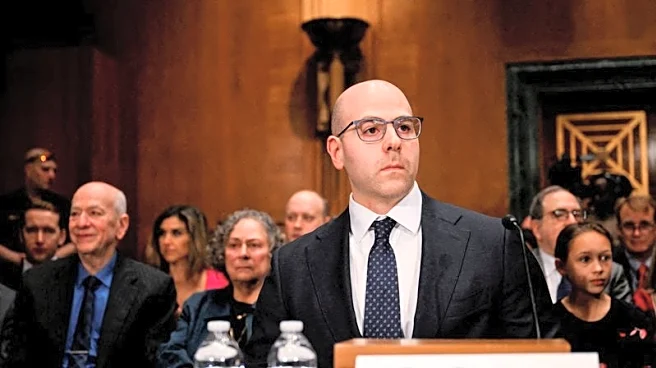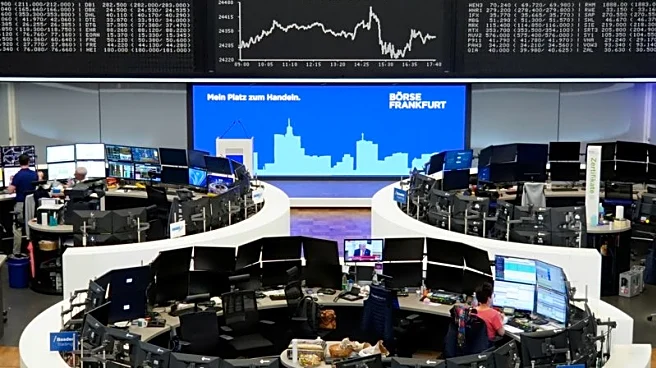By Bo Erickson and Ann Saphir
(Reuters) -Stephen Miran, a top White House economic advisor, is expected to clear a U.S. Senate hurdle on Wednesday, advancing his nomination as Federal Reserve governor and furthering President Donald Trump’s effort to exert more direct control over interest rate policy and the central bank’s broader role.
Members of the Senate Banking Committee are expected to hold a vote before a 10:00 EDT (1430 GMT) hearing that would advance Miran's nomination to the full Senate.
Democrats are all expected to vote against him, but the panel's 13-11 Republican majority is expected to carry the vote.
Lawmakers involved in the process say it is far from certain if the rest of the confirmation process can be completed in time for Miran to participate in the Fed's September 16-17 policy meeting.
A Senate Republican aide familiar with the confirmation process told Reuters that under the Senate's complex rules the earliest possibility for Miran’s confirmation is Monday, leaving little time to complete other steps required before Miran can be sworn in.
But the 53-47 Republican majority in the Senate makes it likely that even if he is not there in time to vote on rates next week he will get there soon after.
And that would give Trump, who has railed all year at Fed Chair Jerome Powell to lower interest rates, a like-minded voice at the Fed's policy-setting table.
Miran would join two Fed governors Trump appointed during his first term. Both called for a rate cut at the Fed's most recent meeting, and dissented when the majority voted to hold the policy rate steady in its current 4.25%-4.50% range.
Meanwhile Trump is trying to open a second seat at the seven-member Fed board with his attempted removal of Governor Lisa Cook over alleged mortgage fraud, which Cook denies. She is fighting the firing in court, and for now she remains in the job while a judge considers her case.
Many Fed policymakers, including Powell, have signaled a willingness to lower interest rates at the coming meeting given the weakening job market, a trend underscored by data on Tuesday showing the job market was cooling fast even before Trump started his current term and began ratcheting up tariffs.
But Trump has pushed for far faster and steeper reductions than the quarter-point-per-meeting pace financial markets are betting on and that many analysts say is warranted, given the cooling labor market but also inflation that has made little obvious progress toward the Fed's 2% goal this year.
Miran at last week's hearing did not say if he felt interest rates should come down, though he did say he believes inflation is headed downward and tariffs will not reverse that trend, views that would support the case for easier monetary policy.
"A Miran confirmation would be a dovish development for the Fed as he is replacing a hawkish member," analysts at TD Securities wrote, noting Miran would be serving out the unexpired term of Adriana Kugler, who vacated her seat unexpectedly in August and had been a proponent of keeping Fed rates on hold to prevent inflation from reigniting.
That term expires at the end of January and in a highly unusual move Miran plans to take an unpaid leave from the White House rather than resign while he serves at the Fed.
He told lawmakers in a letter earlier this week that he will "reevaluate" that decision should a successor not yet be appointed by his term's end, a situation that would clear the way for him to remain longer than four and a half months.
"Whether Cook is on and whether Miran is seated in time (for the Fed meeting) has little bearing on the September outcome in our view," wrote LH Meyer analyst Derek Tang.
But both questions pose longer-term threats to the Fed's ability to do its job without regard to what politicians want in the short-term, he said.
Fed governors' 14-year terms and the stipulation in law that they can only be removed by a president "for cause" and not over policy differences have long helped safeguard the Fed's independence, widely seen as key to its inflation-fighting effectiveness.
(Reporting by Ann Saphir; Editing by Chris Reese)












